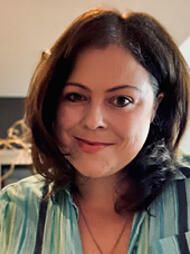
Yesterday, members of the SMUS community witnessed history in the making as we joined our esteemed Indigenous community of elders and artists, along with their families, to be a part of the sacred Coast Salish time-honoured tradition of ‘welcoming,’ with the raising and unveiling of the first-of-its-kind ceremonial Welcome Pole on the field of the Junior School.
The hour-long ceremony was a dedication and a demonstration of our school’s commitment to respecting, honouring, and furthering the education and understanding of our Indigenous peoples’ cultures, here on the Island, and across Canada.
SMUS strives to continually educate its community and staff about “Ten Strands” that we have identified as our goals to help move us forward and become better neighbours.
Ceremonies such as this one allow us to reflect this commitment to being respectful citizens by honouring our Indigenous friends in ways that are meaningful to us all: through the installation of traditional First Nations cultural pieces in prominent places.
The masterful Welcome Pole is the work of SMUS Artist and Carver and Scholar-in-Residence Dylan Thomas. His carefully crafted piece was on full display, all 12 feet–its colours and etchings vibrantly lit by the noon-hour sun at the time of its unveiling.
Not only does Thomas’ work capture his Coast Salish ancestral heritage, but its richly scented red-cedar body is intended, as Head of School Mark Turner said in his welcome speech, “ to prepar[e] young people for their travels in this great land.”
At the ceremony’s opening, students in groups of four donned blankets in a traditional style, as a symbol of the ancestral protection surrounding them as they set forth along their learning pathways. Guided by Elders Willie Pierre and Bill White, the students walked in procession while Mr. Pierre sang and drummed a Coast Salish welcoming song straight through to the Welcome Pole.
There, the students (who each contributed their markings to the back of the pole) brushed the totem with cedar boughs “to help make it come alive for another day and time.”
“On behalf of St. Michaels University School, Willie Pierre will work with the students to welcome the pole to our school grounds and to celebrate the gifts and stories it, too, will carry," said Turner.
“This truly is what Reconciliation is about. Our goal throughout is to recognize a protocol that is traditional enough to be recognized and accepted by the ancestors of the people who have lived on these lands in time immemorial."
Staff and honoured guests visited this new cultural piece–the latest to to grace the Junior School since the Trottier-Morgan Annex debuted this fall.
Jennifer Fletcher, an advisor to SMUS's new Indigenous Liaison David Lynch, noted that the Welcome Pole and its witnessing met with “our goal to make sure our Indigenous work is done respectfully and [with] honour.”
“It was so impactful that the school embraced it,” she said.
“It means that events like this resonate with the school community because they have a basic understanding of why it’s important and what it means. Every time the school does something like this, it just further embeds this [understanding] in their daily experience…the understanding of what their role is and what our goal is.”
Elder Bill White of the Snuneymuxw First Nation, and SMUS’ formal Indigenous Guide, noted how this week’s pole-raising ceremony was a “very significant event.”
“The school is interested in establishing stronger ties with the peoples of the region. [Our] events have been very focused on the environment, and the school is big on that as well,” said White, noting that while artist and carver Dylan Thomas may be “young,” his art transcends tradition through time and space.
“He’s producing art in the classic Coast Salish way, using their design elements, and updating it as well, and so that gives it significant strength and credence,” he said, explaining that Coast Salish artwork practically became non-existent during the 1970s.
“Dylan is doing an amazing job of bringing it around again, beautifully.”
Thomas’ pole, his first as an artist, encompasses the etchings of four sacred animals, one of them being the thunderbird, which, in flight, noted White, “causes thunder to be heard."
"Out of his eyes light brightens the lands. The old people told everyone to use old rights and ceremonies to protect and surround.”
For his part, Thomas thanked our school for welcoming him on as Scholar in Residence and for providing him with the opportunity to share his artwork in support of SMUS commitment to its Indigenous teaching- and learning journey.
“As an artist, carving your first pole is a very, very significant moment in your career—and because of all your help I was able to do two poles,” said Thomas, in his post-ceremony speech.

Claire Lawler, a SMUS Grade 12 boarding student, who was part of the ceremonial procession, said the Welcome Pole dedication was meaningful for her, especially as a witness who hails from South Africa.
“Just being a part of the Canadian Indigenous ceremony has been an awesome thing to witness. It’s amazing to see how Canada is taking steps forward to repair the bonds with their Indigenous communities,” she said.
Mark Turner noted that this most recent ceremony is yet another example of “what we’ve been doing to move our Indigenous learning journey forward."
"We’re on a learning journey and that’s why we’re so grateful to have the advice of our elders Bill White and Willie Pierre. And, it’s so important to have had Keven and Jen Fletcher, and now David Lynch, as our Indigenous Liaison who make sure that we honour Indigenous protocol with respect.
"We start from this position where we want to do things right, and we want to respect them, and that makes it paramount that we remain receptive to the advice we’re offered.”
Currently, Thomas is busy at work on his second Welcome Pole which will be raised and dedicated in ceremony on the Richmond Road campus sometime in the new year.



